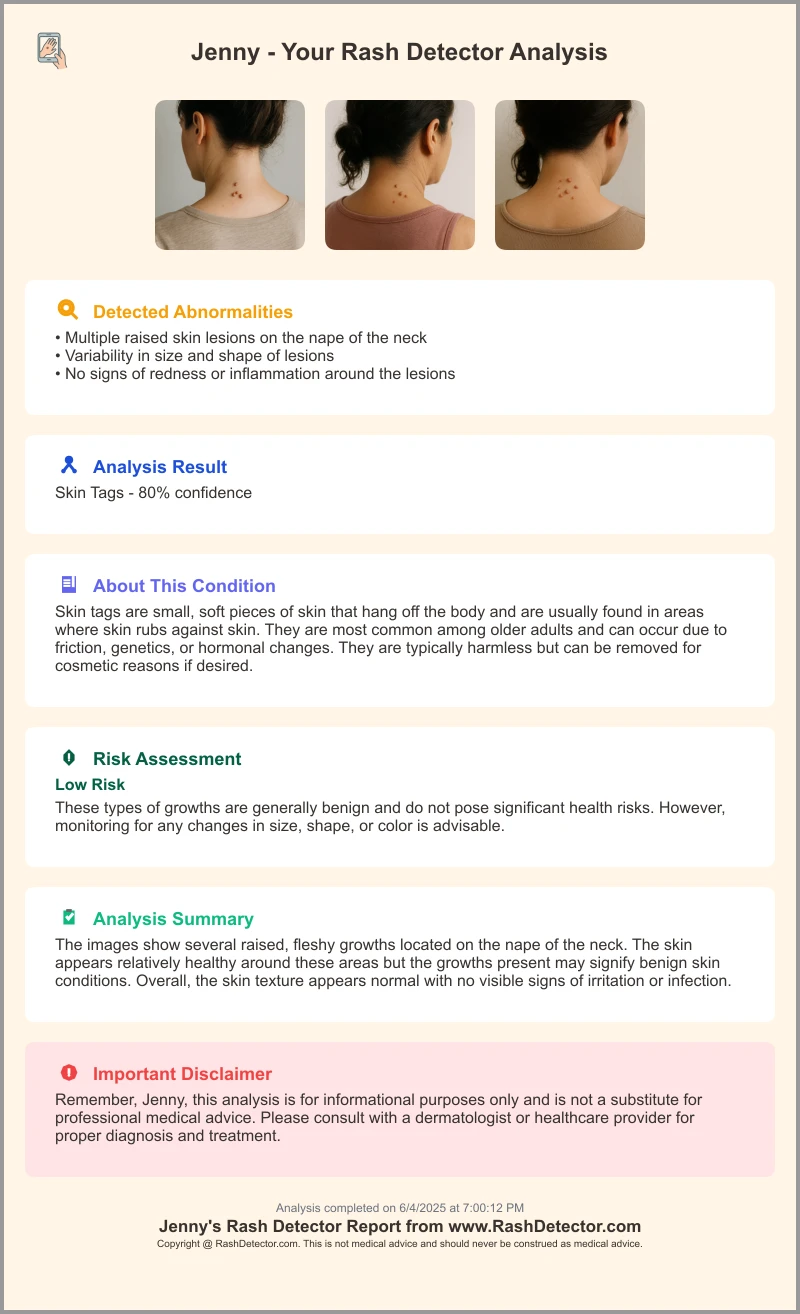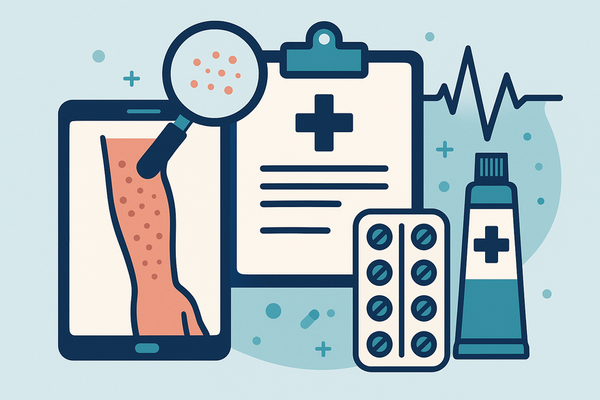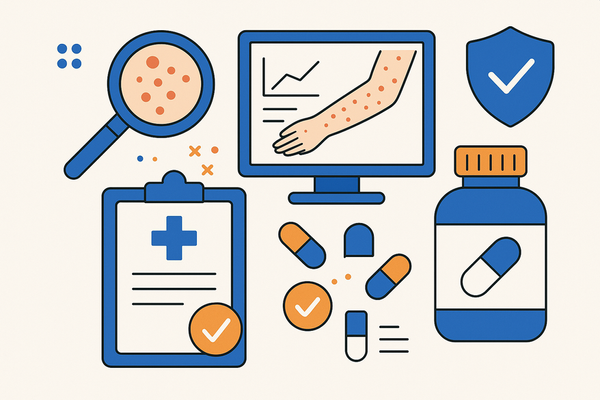Medication Rash Treatment: Effective Strategies for Identification and Management
Discover effective medication rash treatment strategies for identifying, diagnosing, and managing drug-induced rashes, ensuring patient safety and comfort.

Estimated reading time: 8 minutes
Key Takeaways
- Early recognition and discontinuation of the offending drug are crucial for safe outcomes.
- Treatment ranges from home remedies and OTC antihistamines to prescription steroids and emergency care.
- Understanding allergic versus non-allergic triggers helps guide appropriate interventions.
- Prevention through clear communication, dose monitoring, and diary-keeping reduces future risks.
Table of Contents
- Scope of This Guide
- What Is a Medication Rash?
- Common Causes and Triggers
- Diagnosing a Medication-Induced Rash
- Medication Rash Treatment
- Prevention and Monitoring Strategies
- Conclusion
Scope of This Guide
This guide covers:
- How to identify a medication-induced rash
- Why certain medications cause rashes
- When and how to seek diagnosis
- Comprehensive medication rash treatment strategies (home, OTC, professional)
- Prevention and monitoring tips
What Is a Medication Rash?
In understanding medication rash treatment, we first define key terms. A medication-induced rash is any adverse skin reaction from a drug (Merck Manual).
Common symptoms include:
- Redness and swelling (erythema)
- Itching (pruritus)
- Bumps, hives, blisters (urticaria)
- Pain or tenderness
- Peeling or dark patches in severe cases
- Rare systemic signs: fever, joint pain
Typical rash types:
- Morbilliform eruptions – measles-like spots 1–2 weeks after starting a drug
- Urticaria (hives) – raised, itchy welts minutes to days post exposure
- Fixed drug eruptions – dark patches reappearing at the same site
- Stevens-Johnson syndrome (SJS) / Toxic epidermal necrolysis (TEN) – life-threatening blistering and skin peeling
Learn more about identifying drug-induced rash symptoms.
Common Causes and Triggers
Reactions may be:
- Allergic – immune-mediated via histamine or T-cells (Type I or IV hypersensitivity)
- Non-allergic – direct toxicity or irritation
High-risk drug classes:
- Antibiotics: penicillins, sulfa drugs
- Anticonvulsants: phenytoin, carbamazepine
- NSAIDs: ibuprofen, aspirin
- Diuretics: furosemide, thiazides
Early treatment is vital when high-risk drugs are involved (medication rash treatment guide).
Diagnosing a Medication-Induced Rash
Suspect a drug rash if:
- Onset is days to weeks after starting or changing a medication
- Rash improves upon discontinuation of the suspect drug
- No other clear cause (infection, new skincare products)
Self-assessment pointers:
- Keep a list of all medications and supplements
- Note rash appearance, location, and timing
- Log accompanying symptoms: fever, swelling, breathing issues
Red-flag signs for immediate help:
- Difficulty breathing or swallowing (possible anaphylaxis)
- Rapid blistering, peeling skin or severe pain
- High fever, joint pain, swollen lymph nodes
For accurate diagnosis, seek professional advice (Severe Drug Allergy Rashes).
Medication Rash Treatment
Over-the-Counter Remedies and Home Care
- Oral antihistamines (cetirizine, loratadine, diphenhydramine) to relieve itching and swelling
- Topical corticosteroids (hydrocortisone 1% cream) to reduce mild inflammation
- Soothing measures: cool compresses, fragrance-free moisturizers, loose cotton clothing
Professional Medical Treatments
- Prescription corticosteroids (prednisone) for moderate–severe reactions
- Immunomodulators (cyclosporine) for SJS/TEN
- Epinephrine injection for anaphylaxis
- Hospitalization or burn-unit care for life-threatening SJS/TEN
Steps for Immediate Care
- Discontinue the suspected medication under medical supervision
- Seek emergency care for systemic or worsening symptoms
- Follow up with skin/allergy testing if the cause remains unclear
For quick preliminary analysis of drug-induced rashes, many turn to Rash Detector, an AI skin analysis app.

Prevention and Monitoring Strategies
- Communicate known drug allergies to every healthcare provider
- Start new medications at the lowest effective dose; monitor for rash during the first 2–4 weeks
- Keep a medication and symptom diary: names, doses, start dates, rash onset
- Utilize trigger-identification strategies (Trigger Identification Guide)
- Consult a dermatologist or allergist for complex or recurring rashes (Managing Drug Allergy Rash)
Conclusion
Timely medication rash treatment hinges on identifying the reaction, stopping the culprit drug, and choosing the right therapy—from OTC antihistamines to emergency interventions. Monitoring, clear communication with providers, and allergy testing can prevent future incidents and ensure you continue vital medications with confidence.
FAQ
Q1: How quickly do medication rashes resolve once the drug is stopped?
A1: Mild rashes often improve within days to weeks after stopping the drug. Severe reactions like SJS/TEN may take longer and require intensive care. Prompt treatment expedites recovery.
Q2: Can I treat all drug rashes at home?
A2: Mild rashes may respond to OTC antihistamines and topical steroids. Rashes with systemic signs—fever, breathing issues, blisters—require professional medical evaluation for safe treatment.
Q3: Should I stop the medication as soon as I notice a rash?
A3: Do not stop prescribed drugs without consulting your prescriber unless you have severe allergic symptoms (anaphylaxis). For urgent cases, seek emergency care and discuss treatment options.
Q4: Is future medication use safe after a rash?
A4: Document reactions thoroughly. Allergy or skin tests help identify safe alternatives. Working with your provider ensures effective treatment and reduces the risk of repeat reactions.





